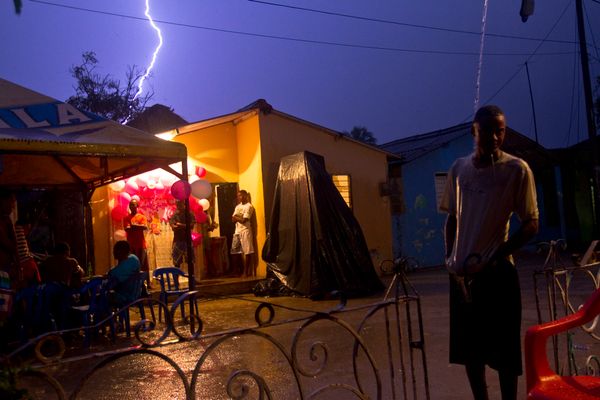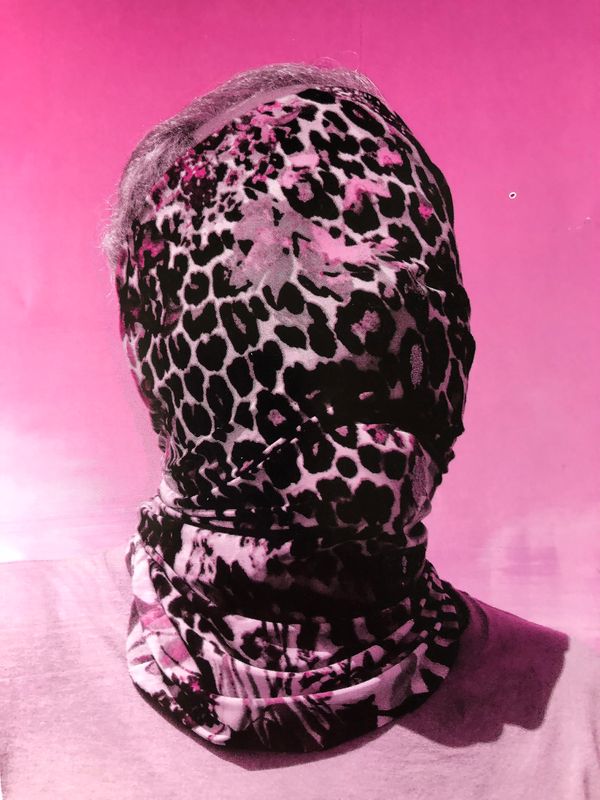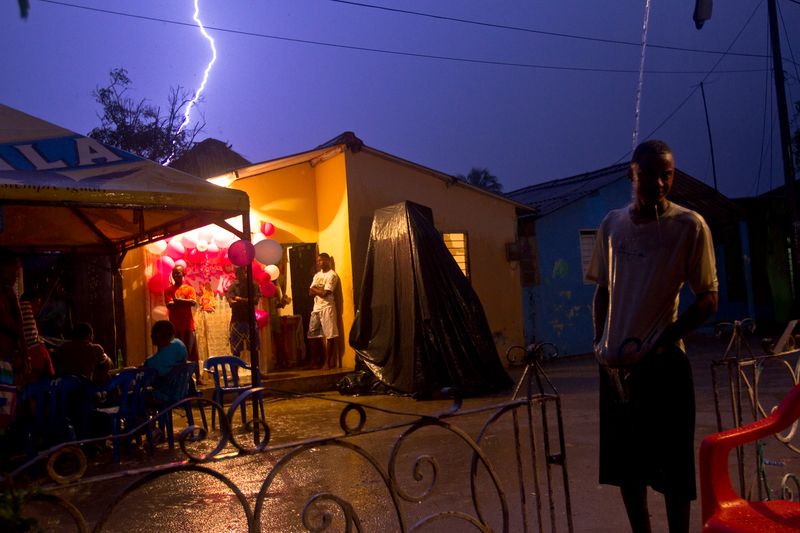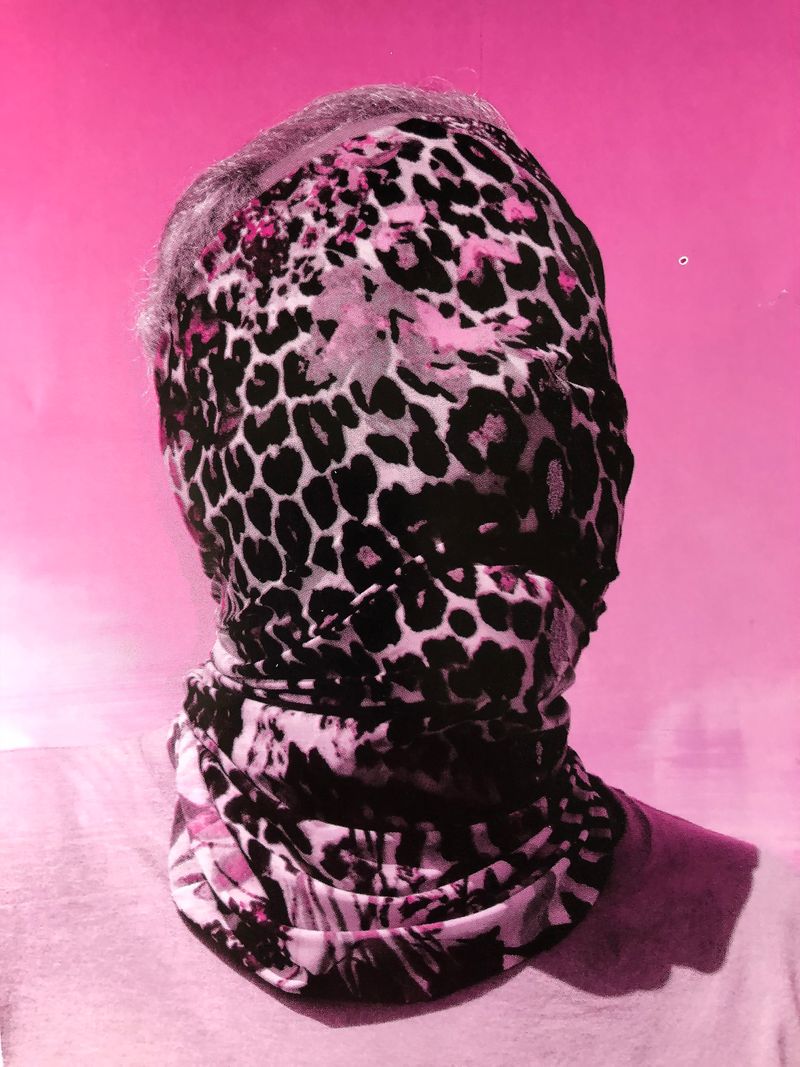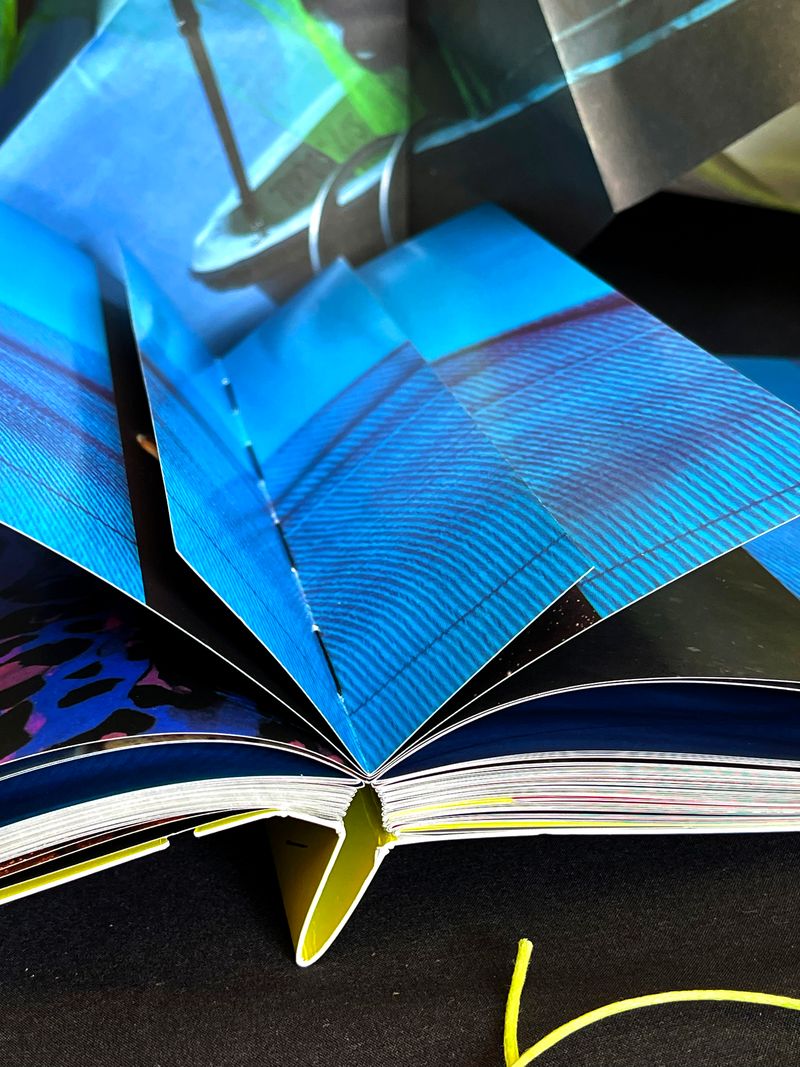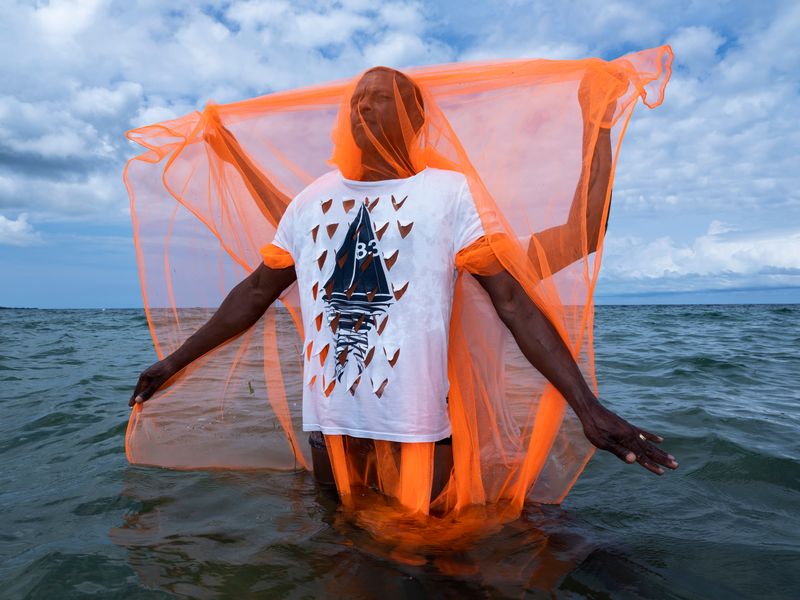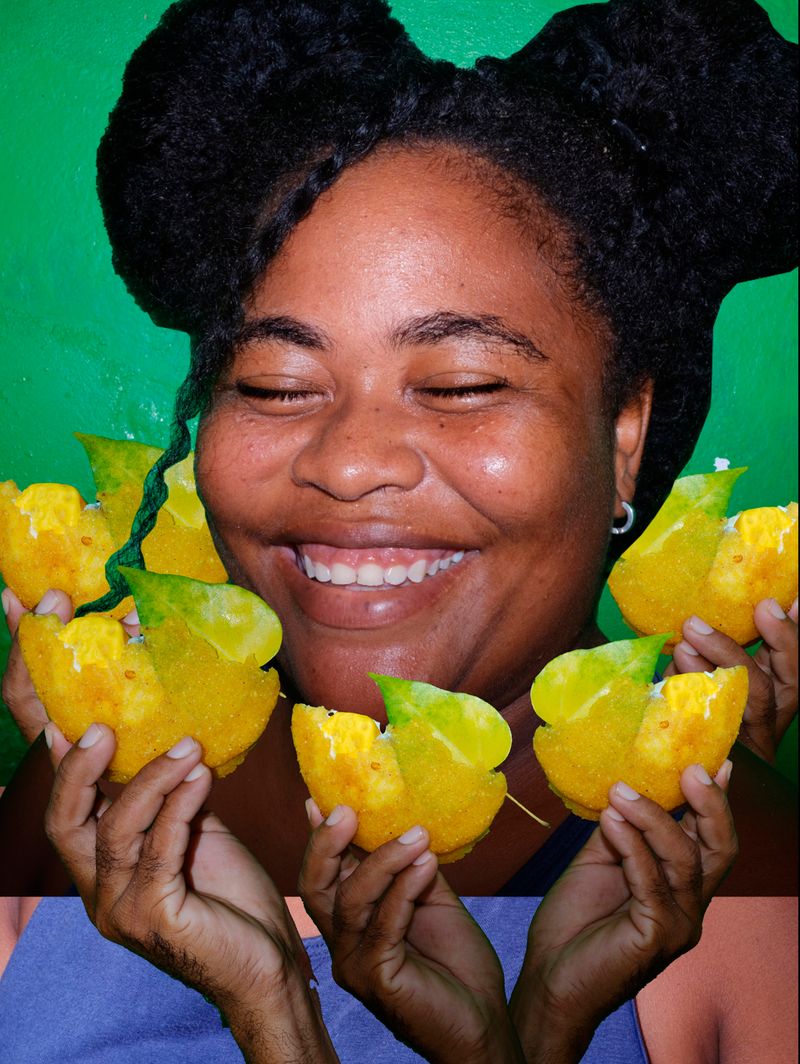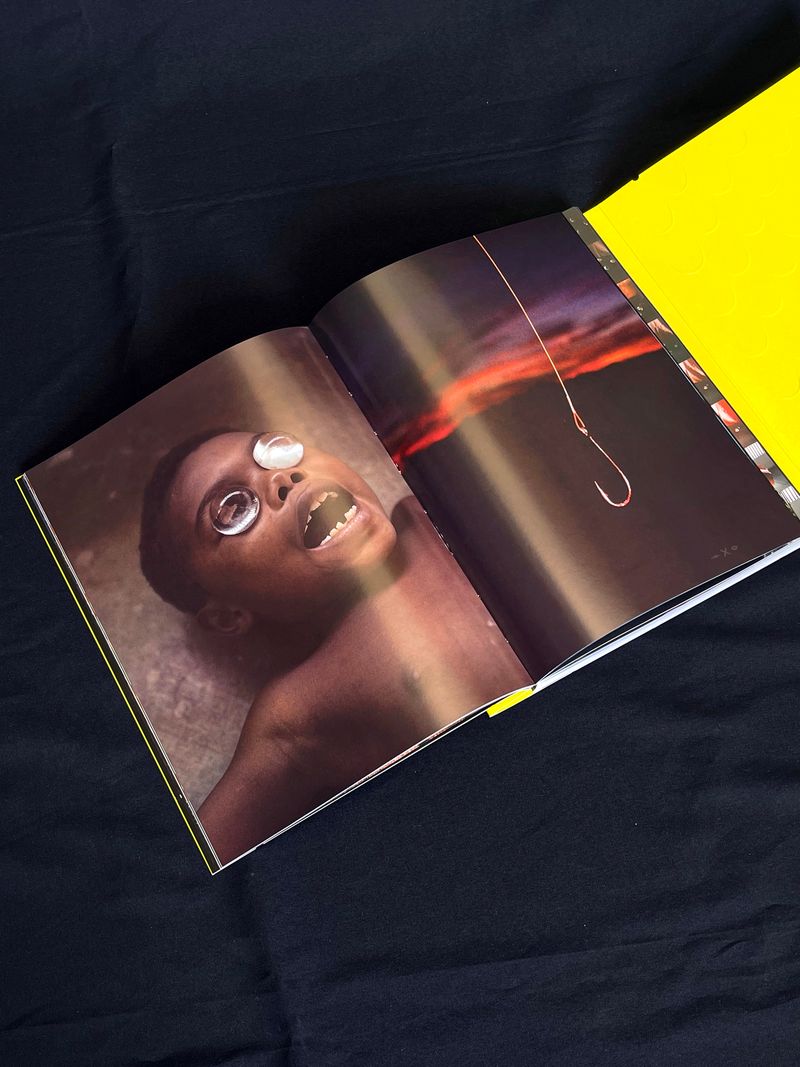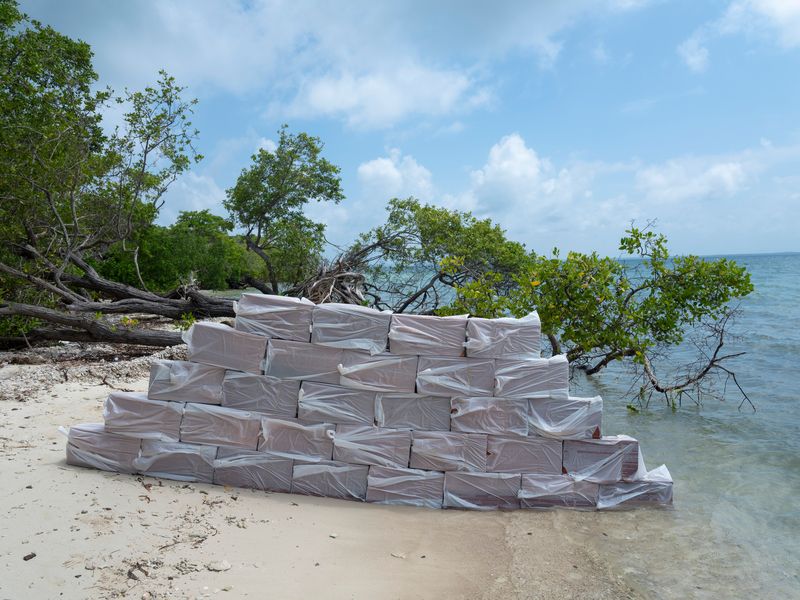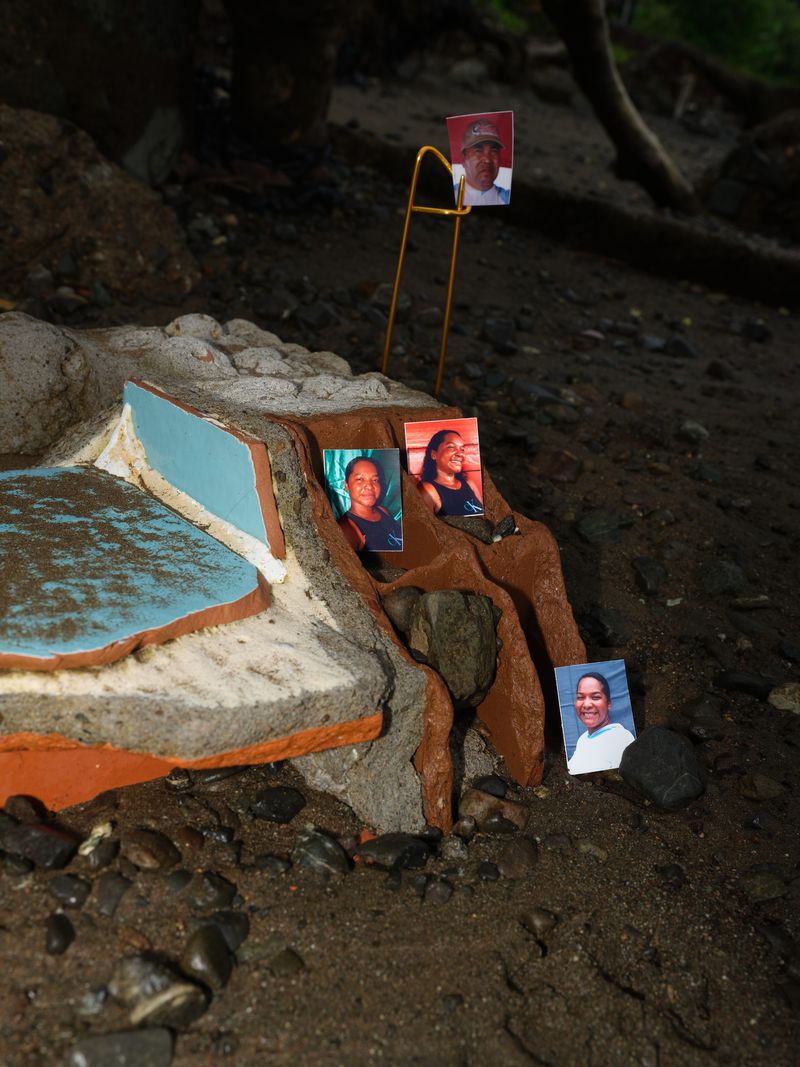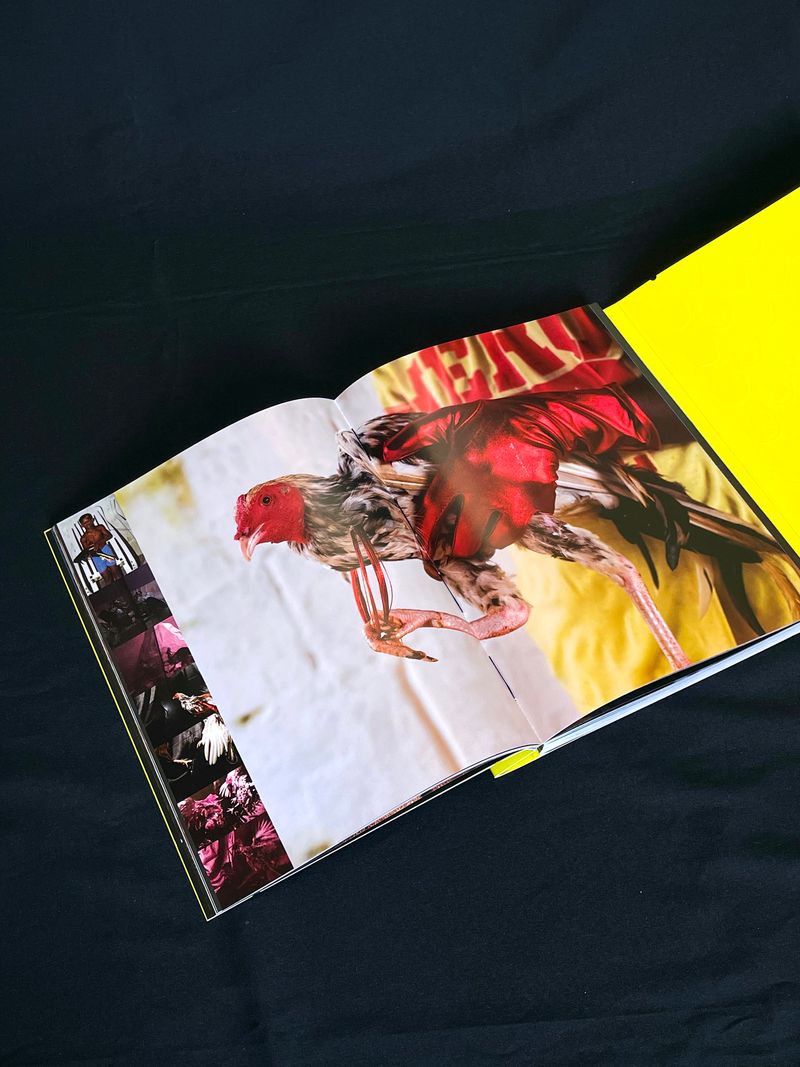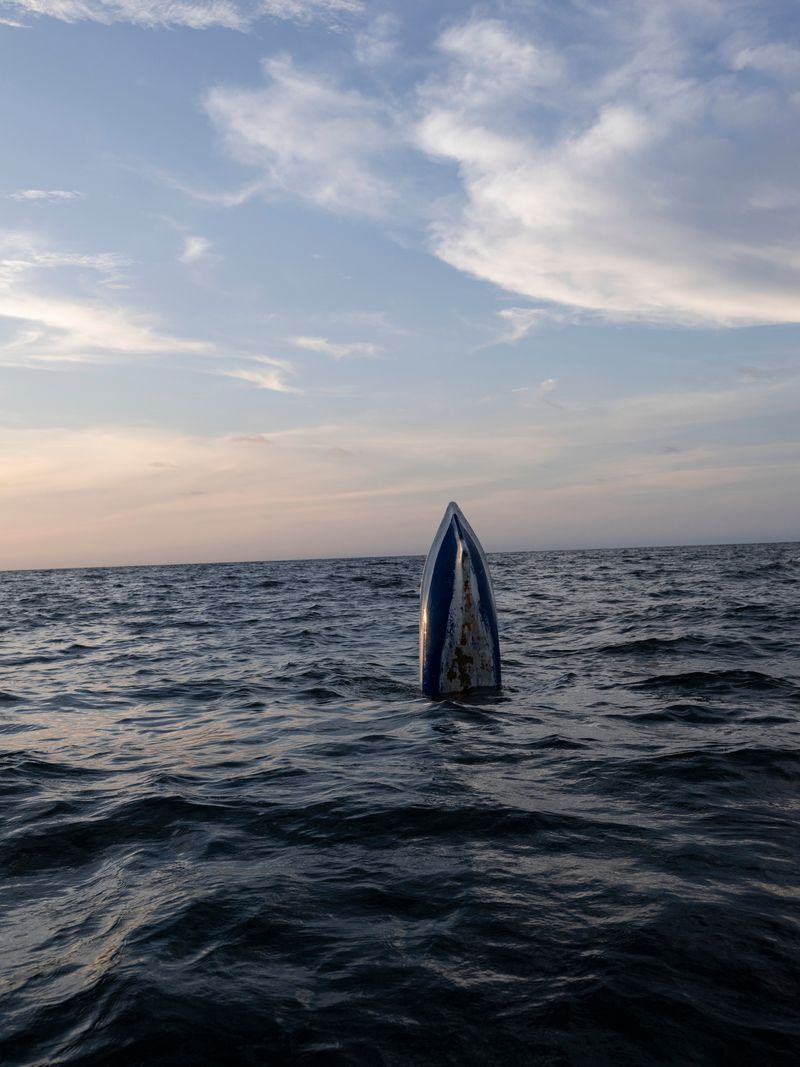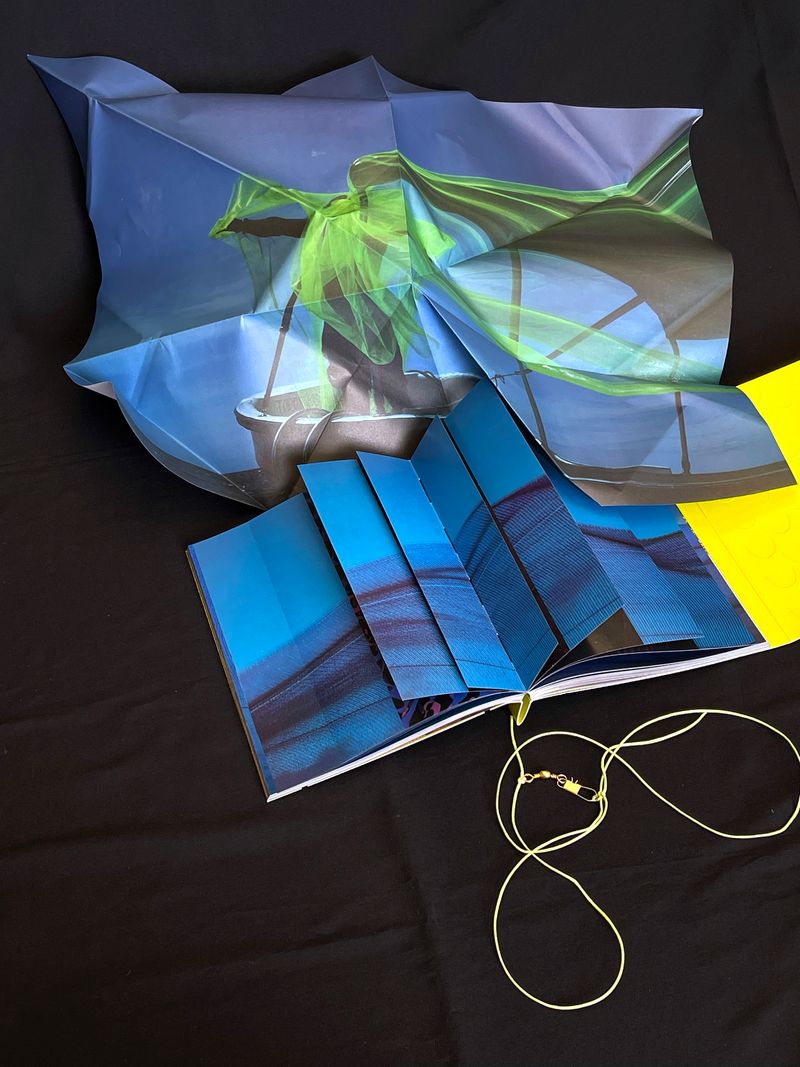Photobook Review: El Pez Muere Por La Boca by Santiago Escobar-Jaramillo
-
Published23 Apr 2025
-
Author
- Topics Photobooks, Social Issues
The work delves into a coastal community grappling with drug trafficking. Moving beyond typical portrayals of Colombia's drug trade, the project offers a personal and participatory look at resilience, culture, and the interplay of realities.
Santiago Escobar-Jaramillo started thinking about the project in 2018: “I was in Bahía Solano, fishing with my father, my brother, and my uncle, when the boat driver said ‘Uy, esa paca de droga, la pesca blanca!’ referring to a floating cocaine bar. Drug traffickers smuggle drugs out along the Colombian coast. When they're intercepted by the Naval Force they throw their cargo into the sea and try to escape. Fishermen, who usually hunt for snapper, blackbait, and lobster, can find it. Some of them sell it and use the money to build a second floor on their house, a motor for their speedboats, or throw week-long parties. This creates imbalances and increases the flow of violence, trafficking, corruption, and fear in the area.”
For several years he has been visiting different coastal areas in the country – including where he used to go fishing with his father as a child – accepting the challenge of documenting a dangerous subject that hasn’t been photographed or discussed much. “What originally started as a reportage evolved into a more expanded narrative where you can find play, landscape intervention and constructed elements. This is to show how communities are resilient to the onslaughts of violence in the area. Why? Because not everyone participates in this. It doesn't mean that just because there's a coast and there are drugs, everyone agrees.”
The project lies between two worlds in constant contradiction, and collision. That of drug trafficking – violent, forceful, painful, and exuberant – and that of relentless everyday life. Yet Santiago’s lens is more focused on the often disregarded side of the story: that of the little gestures of life, the daily routines that are expressed through things like hairstyles, dance, architecture, gastronomy, whale watching, daily fishing, laughter, play, and celebrations.
It’s both a necessity and opportunity: “the project is called El Pez Muere Por La Boca (The Fish Dies By The Mouth), because you can’t speak out—you risk death if you report or talk too much. But if you do it in a creative, playful, youthful, and participatory way, I think the drug traffickers don't feel threatened.” This is how the collaboration with lifetime friends Davis and Federico started and evolved into a collective performance where everybody from the community is invited to build the images with the author, make decisions, contribute, and be actively involved. The subjects become co-creators of a collective representation to express what they feel and reconquer their space in the narrative.
His visual strategy is successful as it emphasises the importance of collaboration and the strength of the creative act in sharing, understanding and healing the issues of everyday life. The project invites us to challenge our preconceptions, and so does the book. The cover features fish scales. You can push them and that creates volumes. The spine is made like a keel, and as you scroll through the book, it rotates. “It's as if, in some way, the book stops being a book and becomes a boat, a speedboat.” To open it you need to remove the green fishing line that entangles it. These details serve the book concept and invite the reader into a participative act in which every encounter challenges your personal sensibility and interest in finding a meaning.
For this project it is particularly important to challenge the audience. “I speak to people who live outside of Colombia because the biggest consumers of drugs in the world are foreigners. In your country, in France, in the United States. They come from there. There’s also a sense of guilt. It’s a story that involves everyone. At the same time I’m also thinking about what happens with those who live there, those who have to suffer the violence that the drug trade brings, the economic and social inequalities that it involves, the penetration it has in culture.”
The performative act, the intention to make you wonder what's real and how the photos were made, the participatory design of the book are ways to bring those two audiences together. “I’m the editor, designer, and creative director of Raya. I curated every aspect of this book, and I have an ally in Manizales called Matiz Taller Editorial. It’s a publishing workshop where I print most of the books. Janeth, who is the director, receives my ideas and executes them. We’ve been able to develop an entire system of object-books, a distinguished trait of the publishing house, that work as a container of memory. I’ve always been interested in books as living organisms; they have skin, they have movement, they need to be touched.”
Another interesting aspect is how this collective story intertwines with the personal experience of the author: “My surname is Escobar. Every time I travel to some country or to some exhibitions, the whole world jokes about it. They ask me if I brought any gifts, they tell me I looked like Pablo when he was young. I laugh about it, yet there are moments when it affects you, because we are much more than this. So I aim for the book and the project, so colorful and shining, to be the hook to talk about the theme in a more profound way. Of course, first and foremost is the drug, the violence, Colombia; but secondly, precisely, it is the people, their customs, their way of relating, their way of celebrating.” A need – that of challenging prejudice and emphasizing the richness of a culture beyond simplistic narratives – which shows how photography can be a very proper medium to shift perspectives, and answer personal issues these days.
--------------
El Pez Muere Por La Boca by Santiago Escobar-Jaramillo is published by Raya Editorial y Matiz Editorial
18,9 x 25 cm
Die-cut as flakes cover
Semi-soft cover with flaps + string with fishing spinner
48 x 68 cm Poster + Stickers + Augmented Reality Instruction Booklet
256 pages
Text in Spanish and English
Essay by Simón Posada Tamayo
Translation by James Rodríguez
Printing and binding by Matiz Taller Editorial
Edition of 1000
ISBN: 978-628-01-3902-9
--------------
All images © Santiago Escobar-Jaramillo
--------------
Santiago Escobar-Jaramillo is an architect with an MA in Photography and Urban Cultures at Goldsmiths College, University of London. He's an editor at Raya Editorial and AÑZ, Fotografía Expandida de Latinoamérica, founder of 20Fotógrafos, Colectivo+1 & RadioFoto, and the visual curator of the Commission for the Clarification of Truth, Coexistence and Non-Repetition of Colombia.

